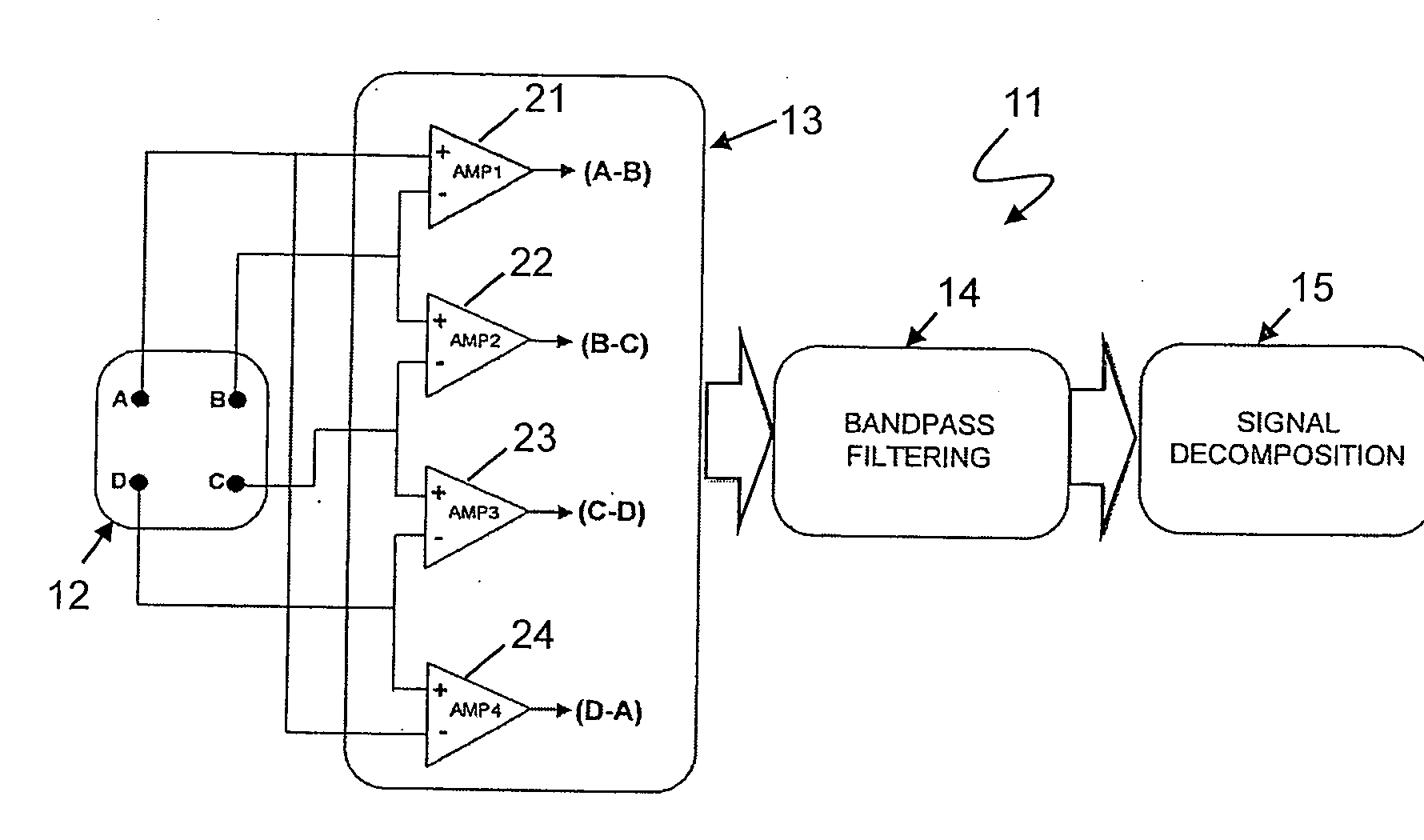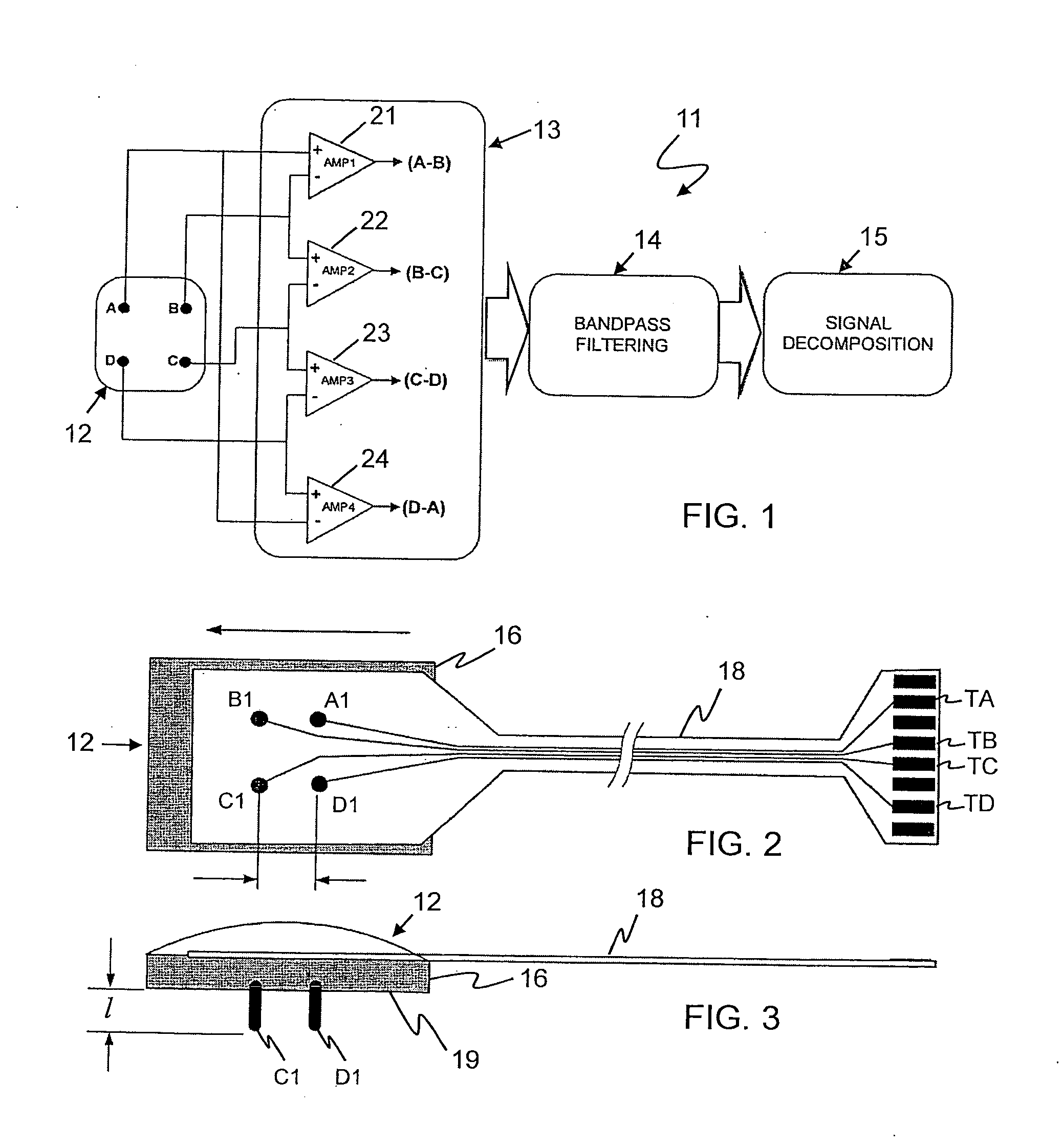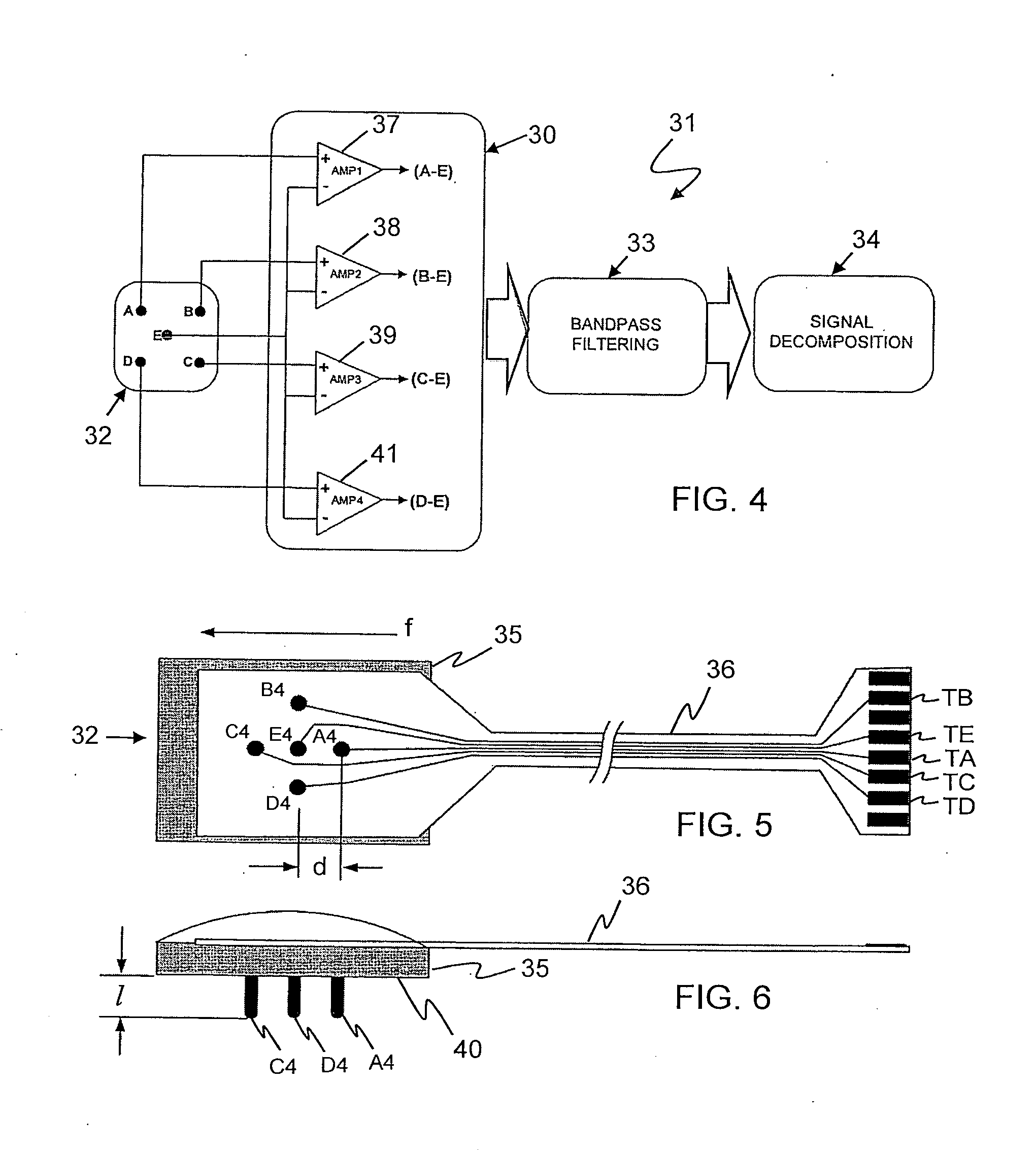Sensor system for detecting and processing EMG signals
a technology of emg signals and sensors, applied in the field of emg signals detection and processing sensors, can solve the problems of affecting the quality of life of people, affecting the ability of people to move, and images that do not provide diagnostic assessment of impairment and recovery, so as to achieve the effect of properly aligning the substra
- Summary
- Abstract
- Description
- Claims
- Application Information
AI Technical Summary
Benefits of technology
Problems solved by technology
Method used
Image
Examples
embodiment 32
[0034]FIG. 4 depicts another sensor system 31 in which another electrode section embodiment 32 is connected to an amplifier section 30, a filtering section 33 and a decomposing section 34. Included in the section 32 is an electrode array (FIG. 5) composed of electrodes A4, B4, C4, D4 and E4 spaced apart on a rectangular substrate 35. Connected by a cable 36 to the electrodes A4-E4 are, respectively, output terminals TA, TB, TC, TD and TE. As shown in FIG. 6, the electrodes are pins having rounded ends and projecting a length of 2 mm from a bottom surface 35 of the substrate 33. The terminals TA-TE are connected to the amplifier section 30 a section 13 with terminals TA and TE connected to a differential amplifier 37, terminals TB and TE connected to a differential amplifier 38, terminals TC and TE connected to a differential amplifier 39 and terminals TD and TE connected to a differential amplifier 41. Preferably, the electrode pins A4-D4 are uniformly spaced from the electrode pin...
embodiment 52
[0035]FIG. 7 illustrates another sensor system 51 in which an electrode section embodiment 52 is connected to an amplifier section 50, a filtering section 53, and a decomposing section 54. Included in the section 52 is an electrode array (FIG. 8) composed of electrodes A7, B7, C7, D7, E7 and F7 spaced apart on a rectangular substrate 55. Connected by a cable 56 to the electrodes A4-F7 are, respectively, output terminals TA, TB, TC, TD, TE and TF. As shown in FIG. 6, the electrodes are pins having rounded ends and projecting a length of 2 mm from a bottom surface 60 of the substrate 33. The terminals TA-TF are connected to amplifier section 50 with terminals TA and TB connected to a differential amplifier 57, terminals TB and TC connected to a differential amplifier 58, terminals TF and TE connected to a differential amplifier 59 and terminals TD and TE connected to a differential amplifier 61. Preferably, the electrode pin pairs A7 and B7, B7 and C7, E7 and F7, and D7 and E7 are un...
PUM
 Login to View More
Login to View More Abstract
Description
Claims
Application Information
 Login to View More
Login to View More - Generate Ideas
- Intellectual Property
- Life Sciences
- Materials
- Tech Scout
- Unparalleled Data Quality
- Higher Quality Content
- 60% Fewer Hallucinations
Browse by: Latest US Patents, China's latest patents, Technical Efficacy Thesaurus, Application Domain, Technology Topic, Popular Technical Reports.
© 2025 PatSnap. All rights reserved.Legal|Privacy policy|Modern Slavery Act Transparency Statement|Sitemap|About US| Contact US: help@patsnap.com



